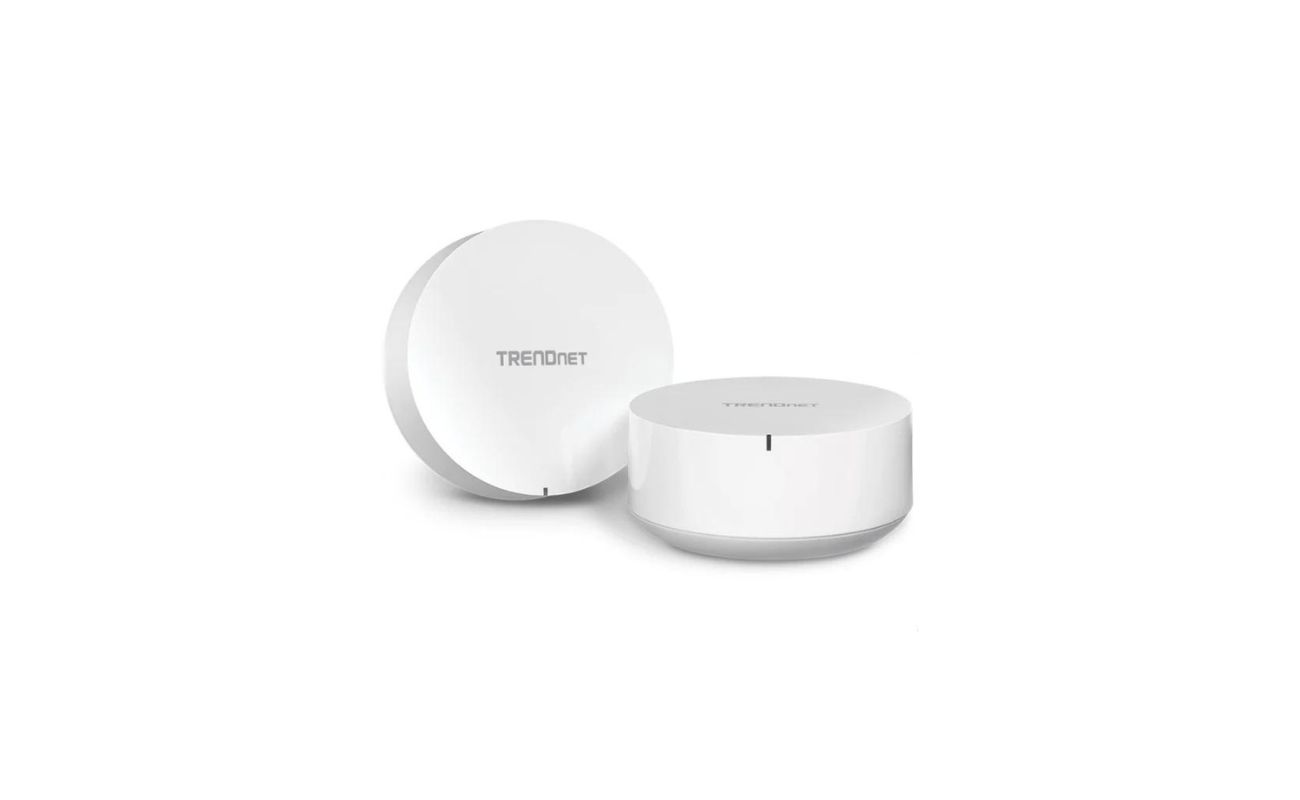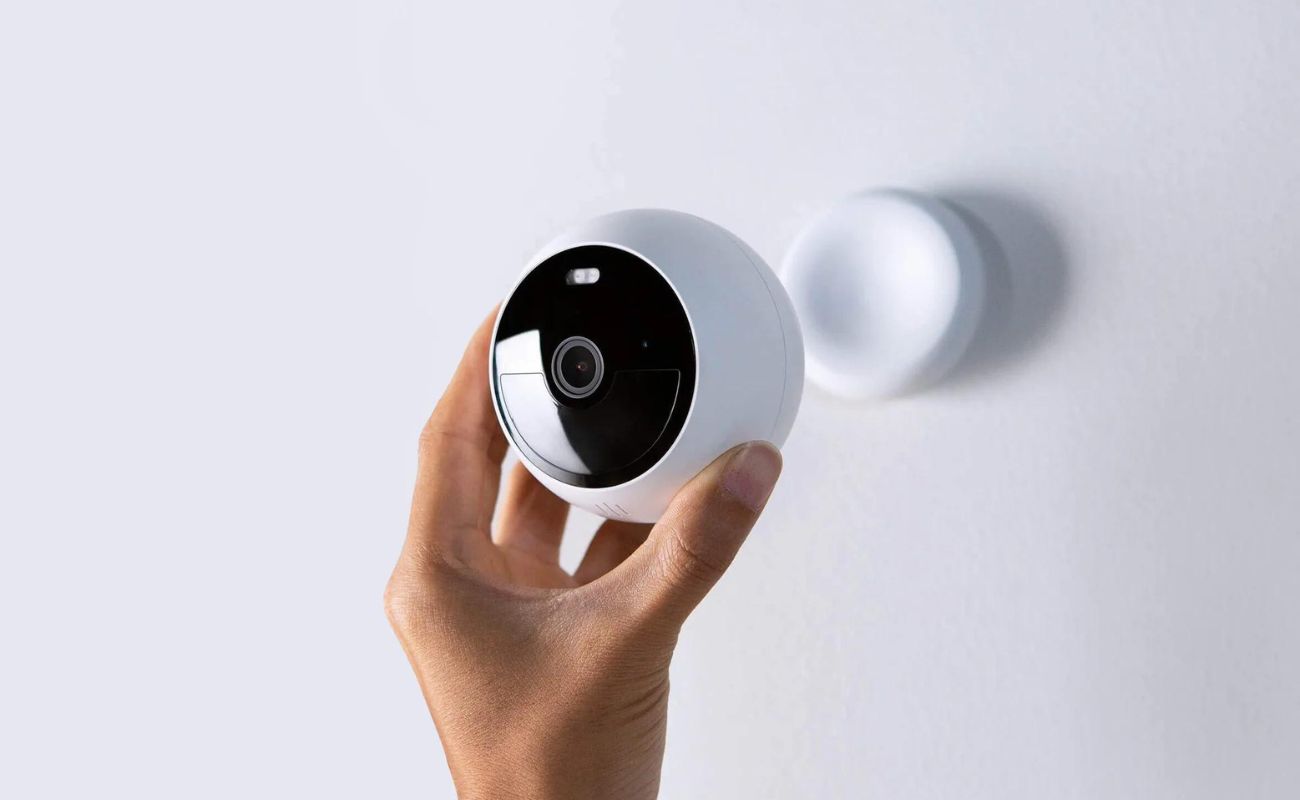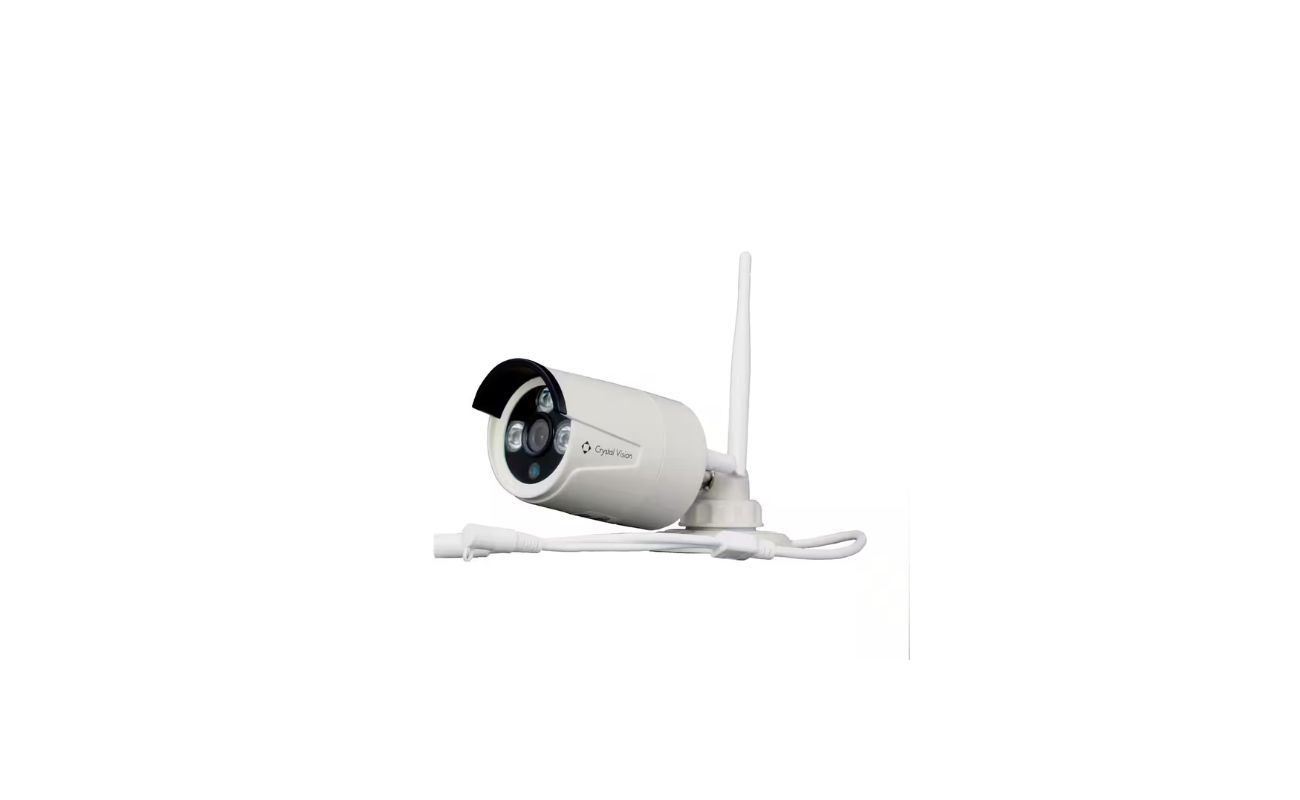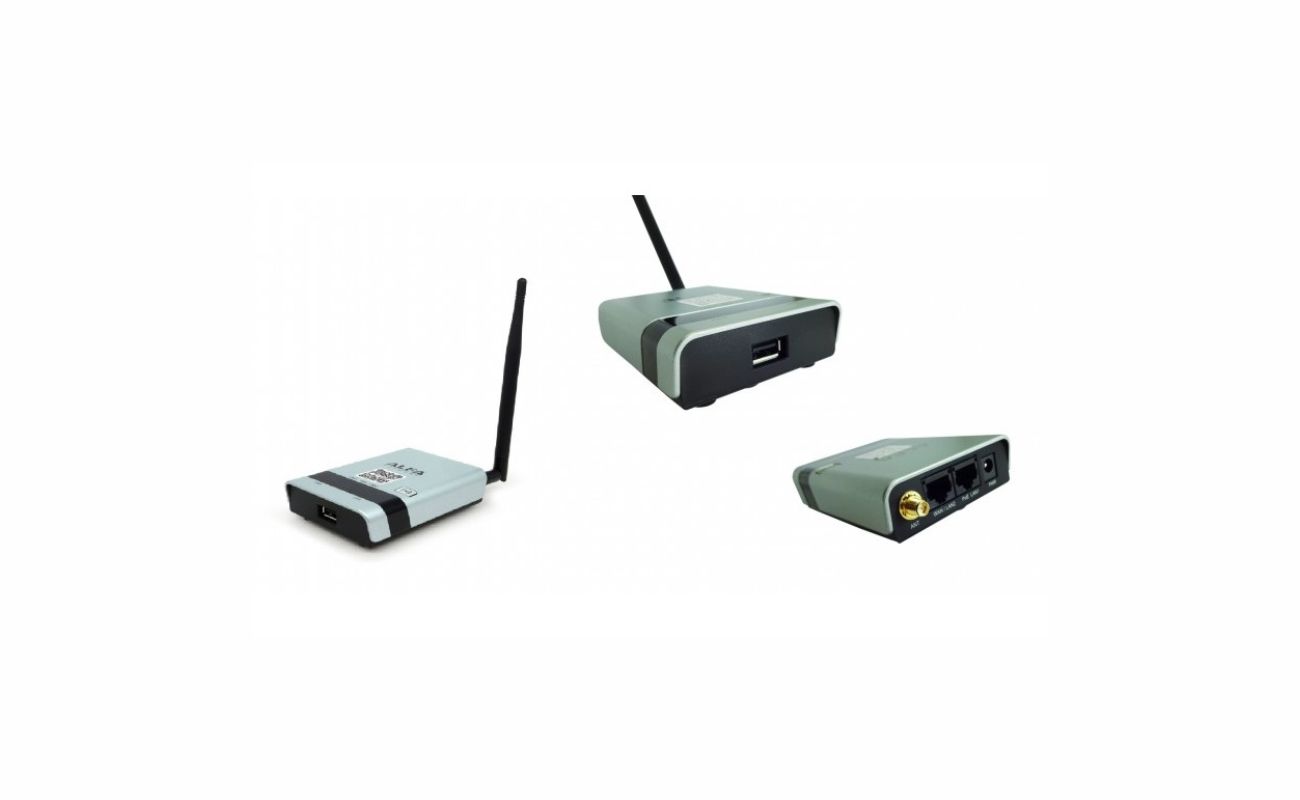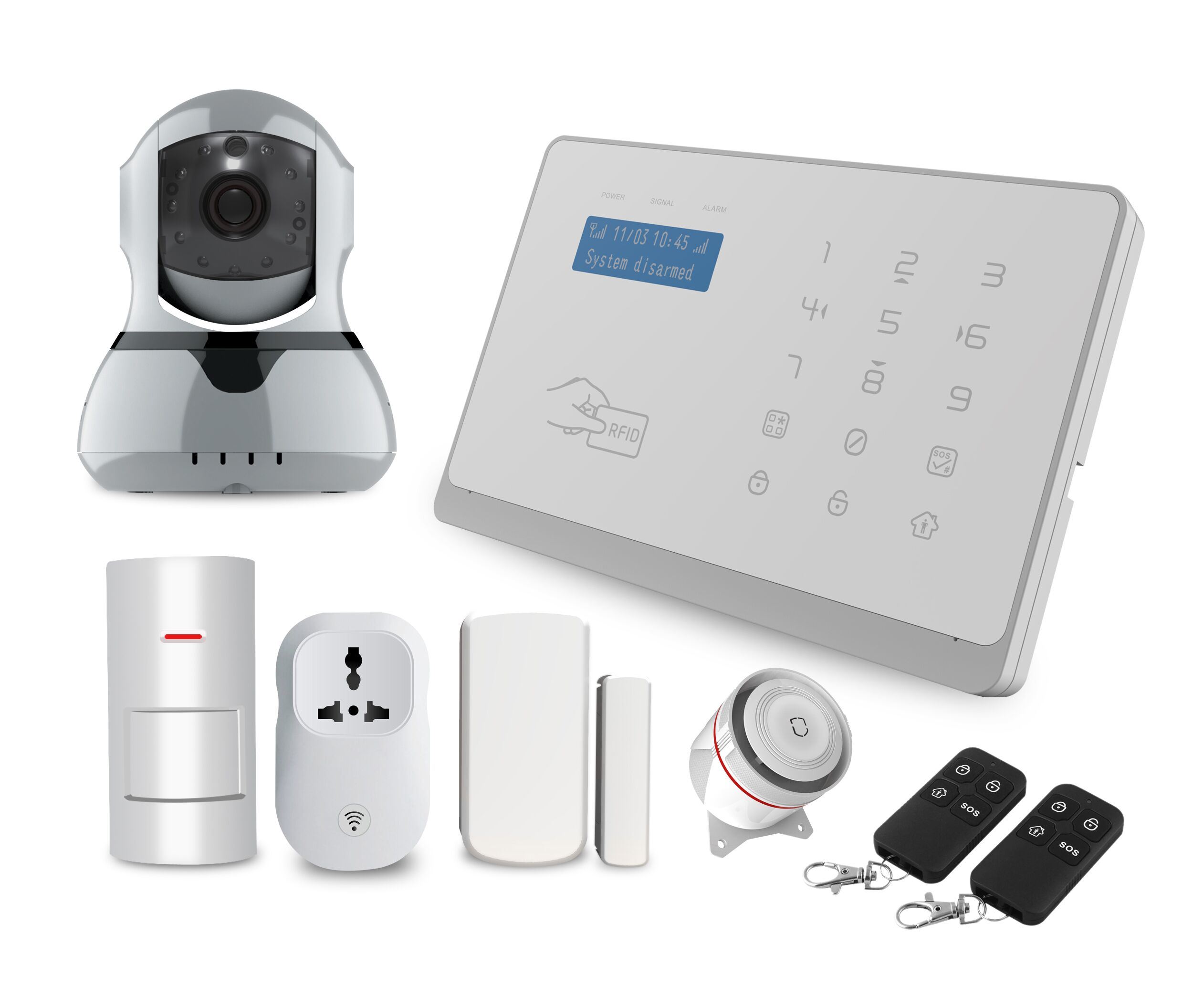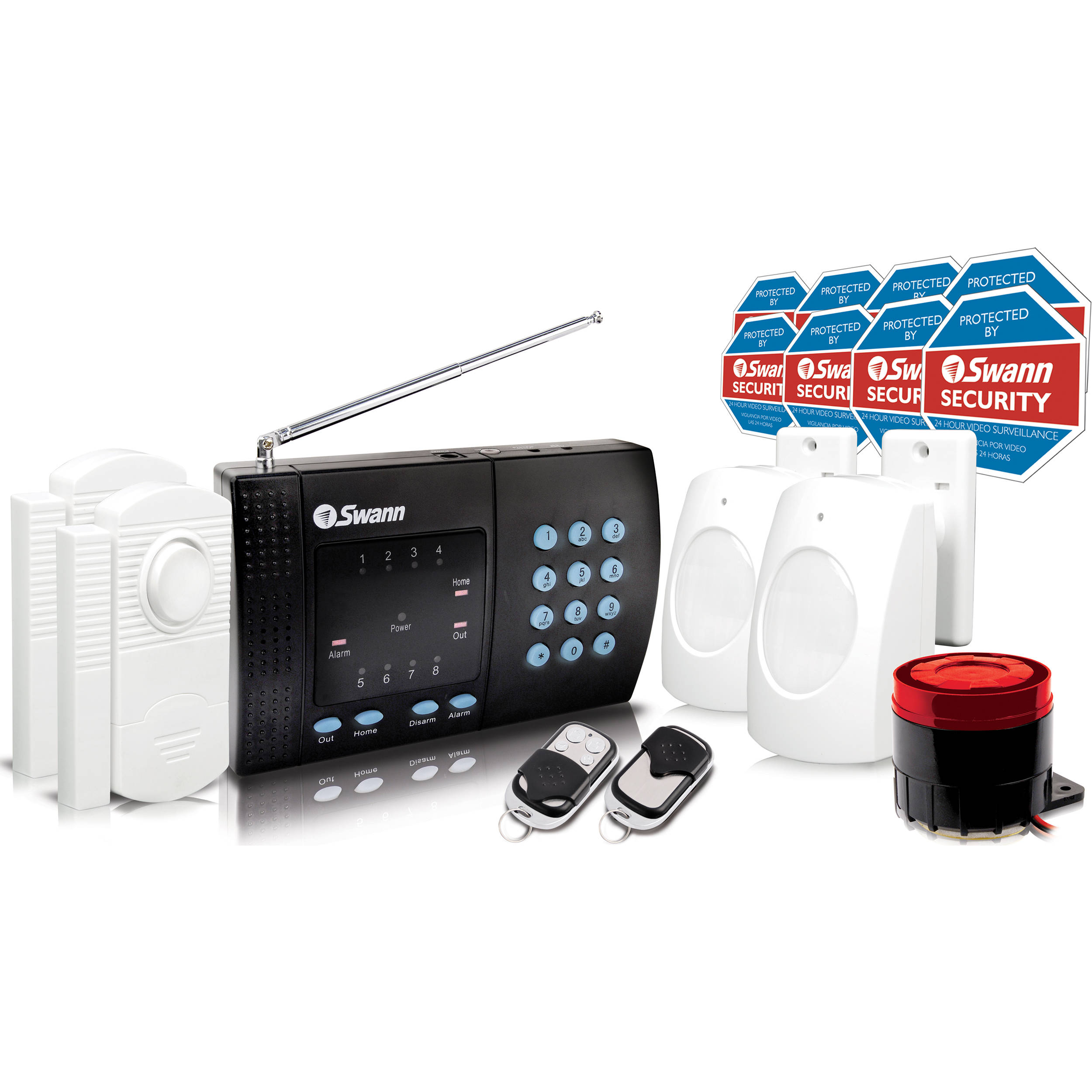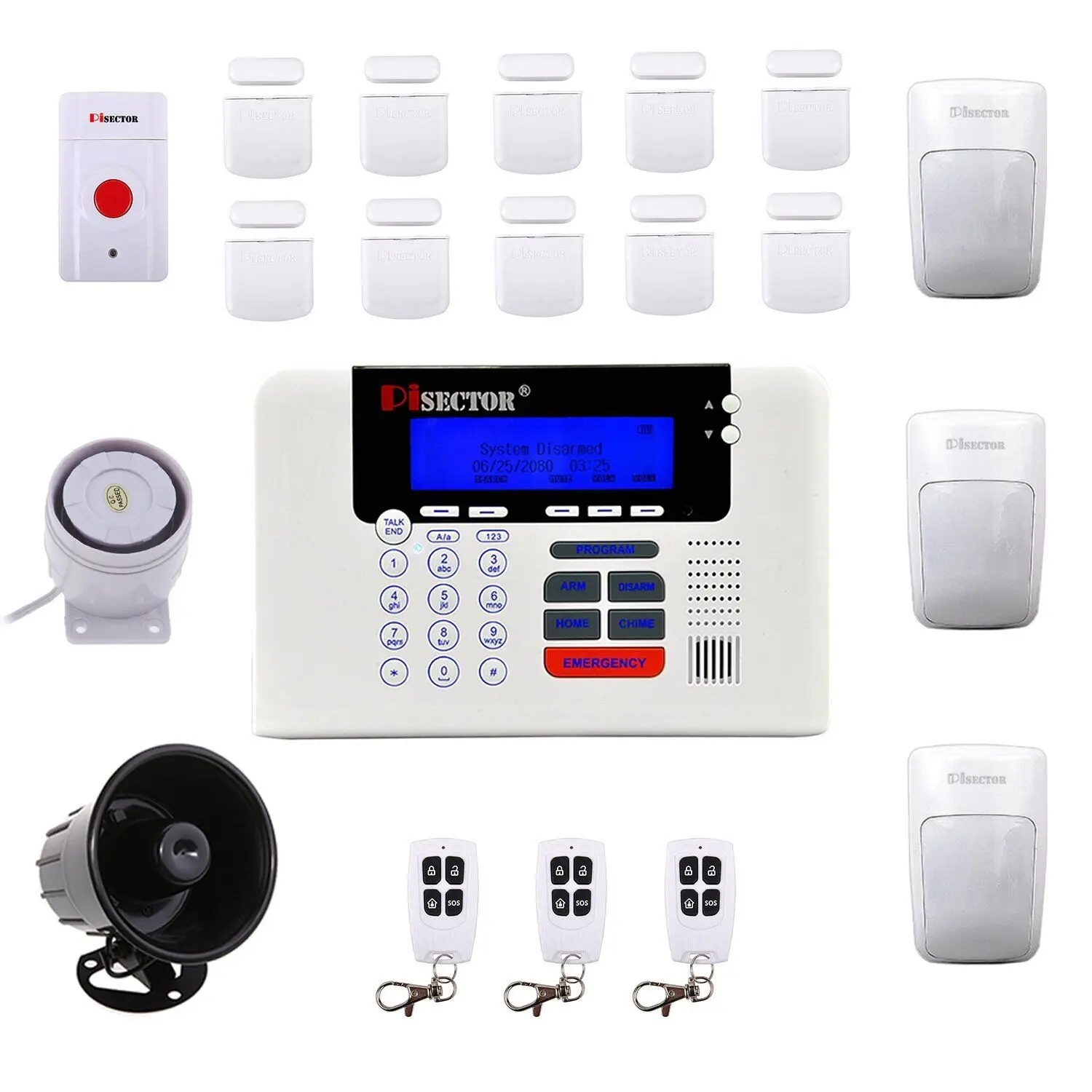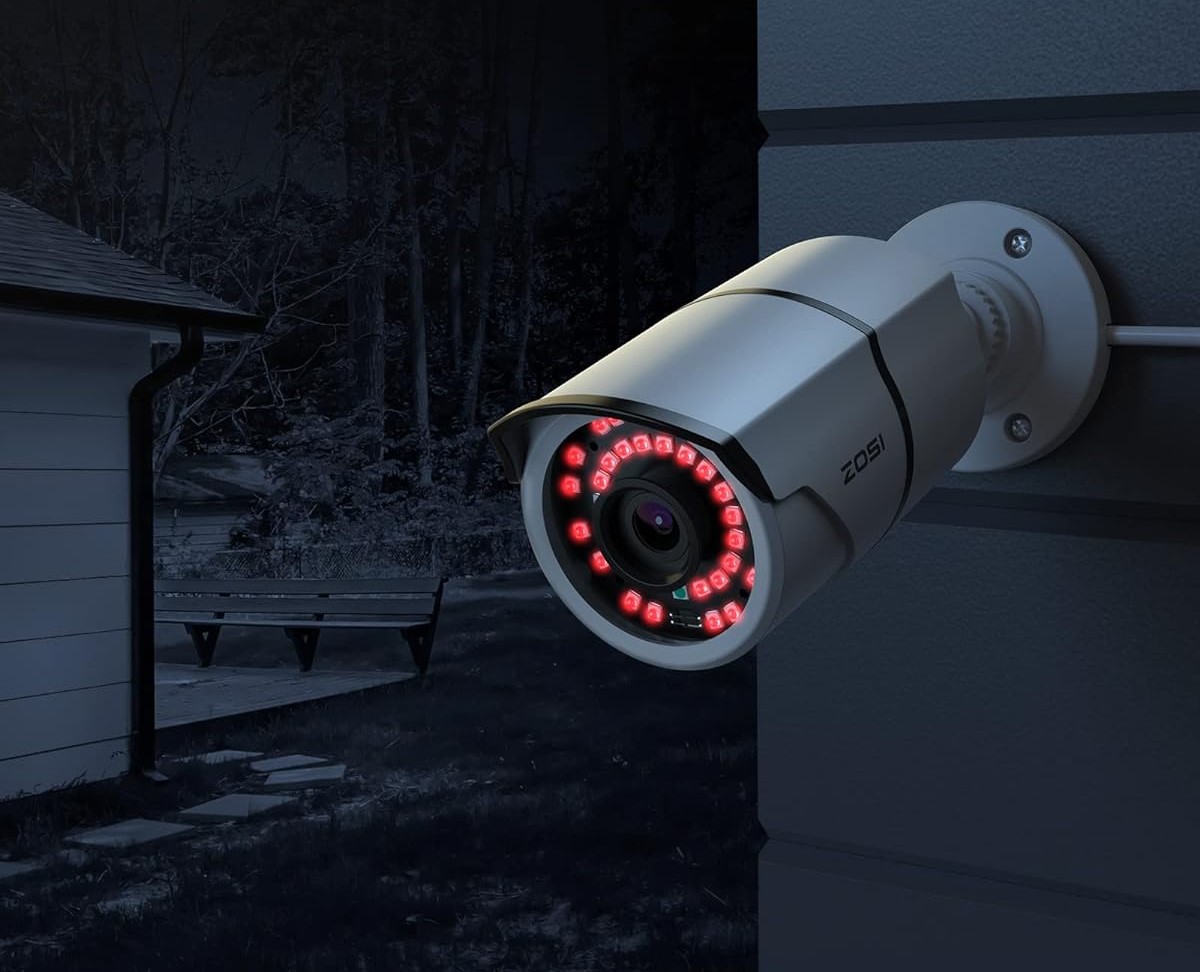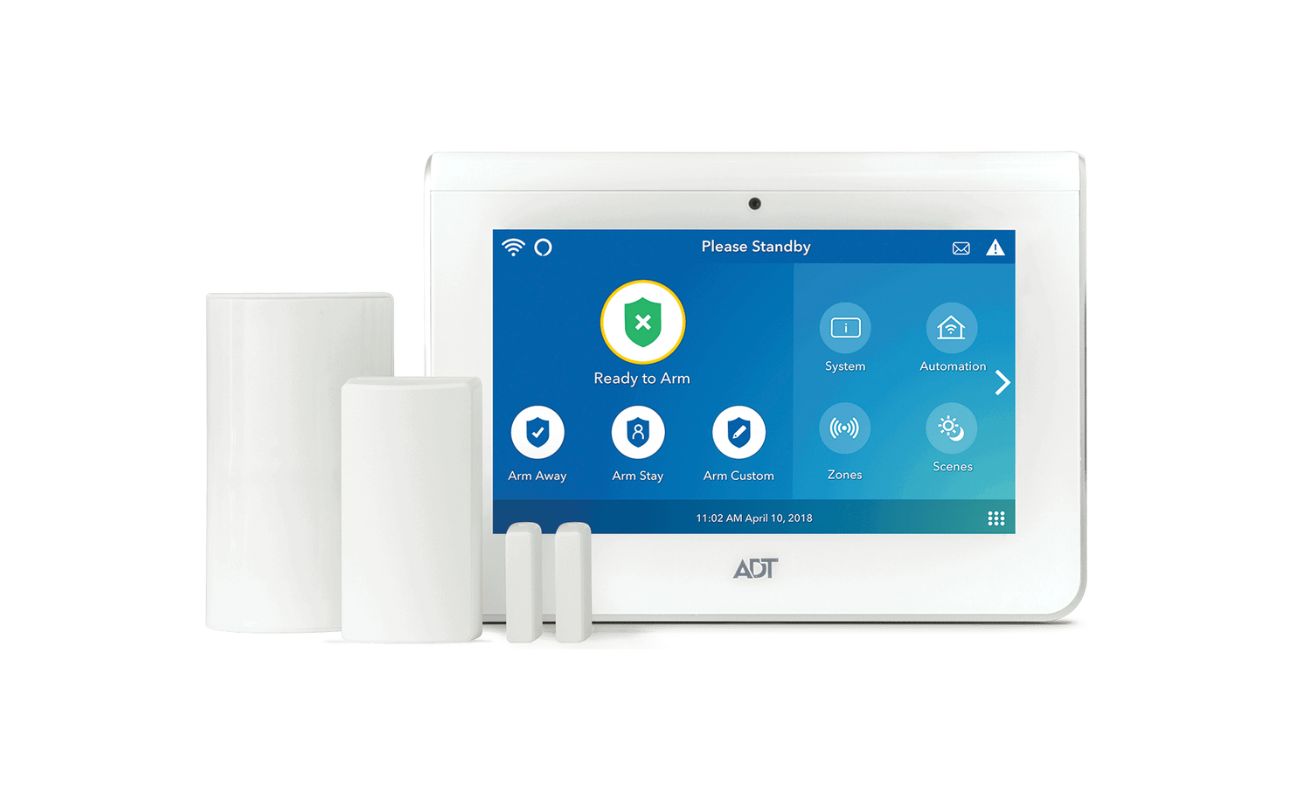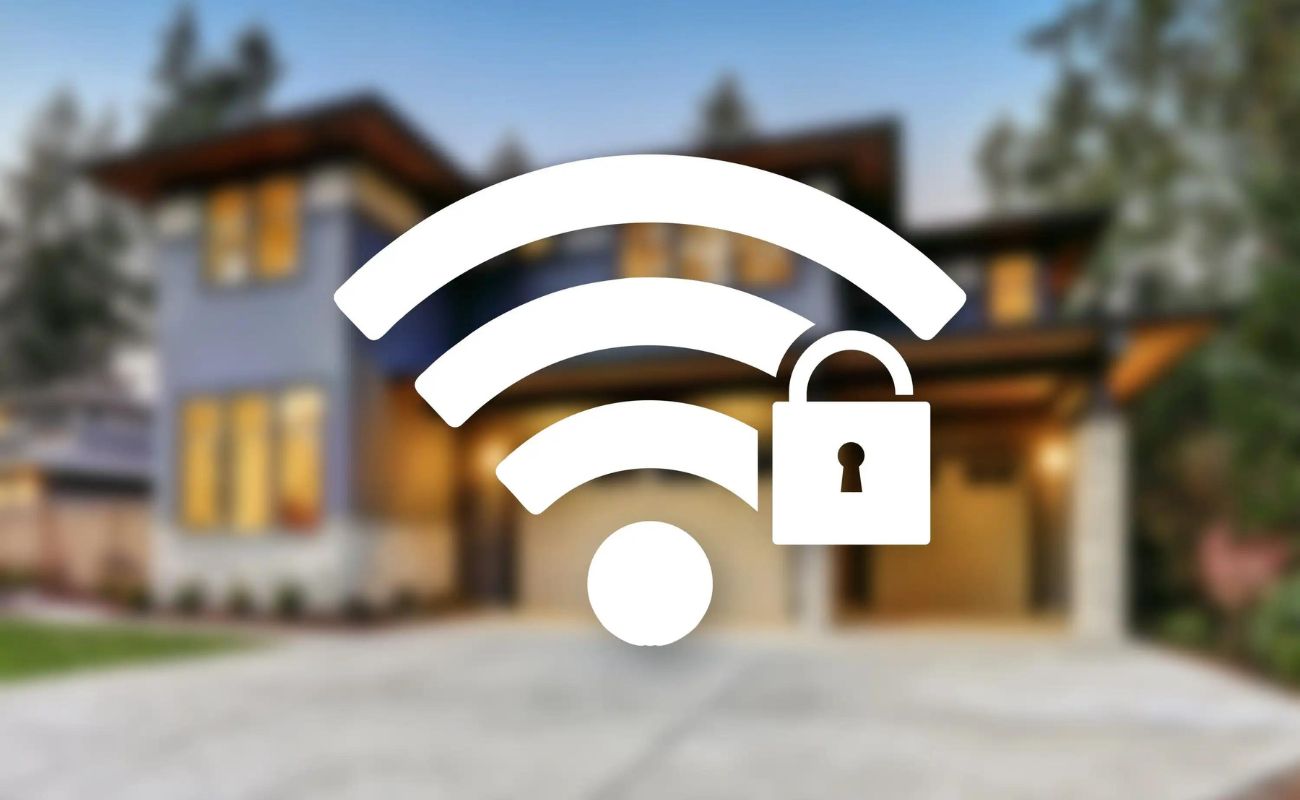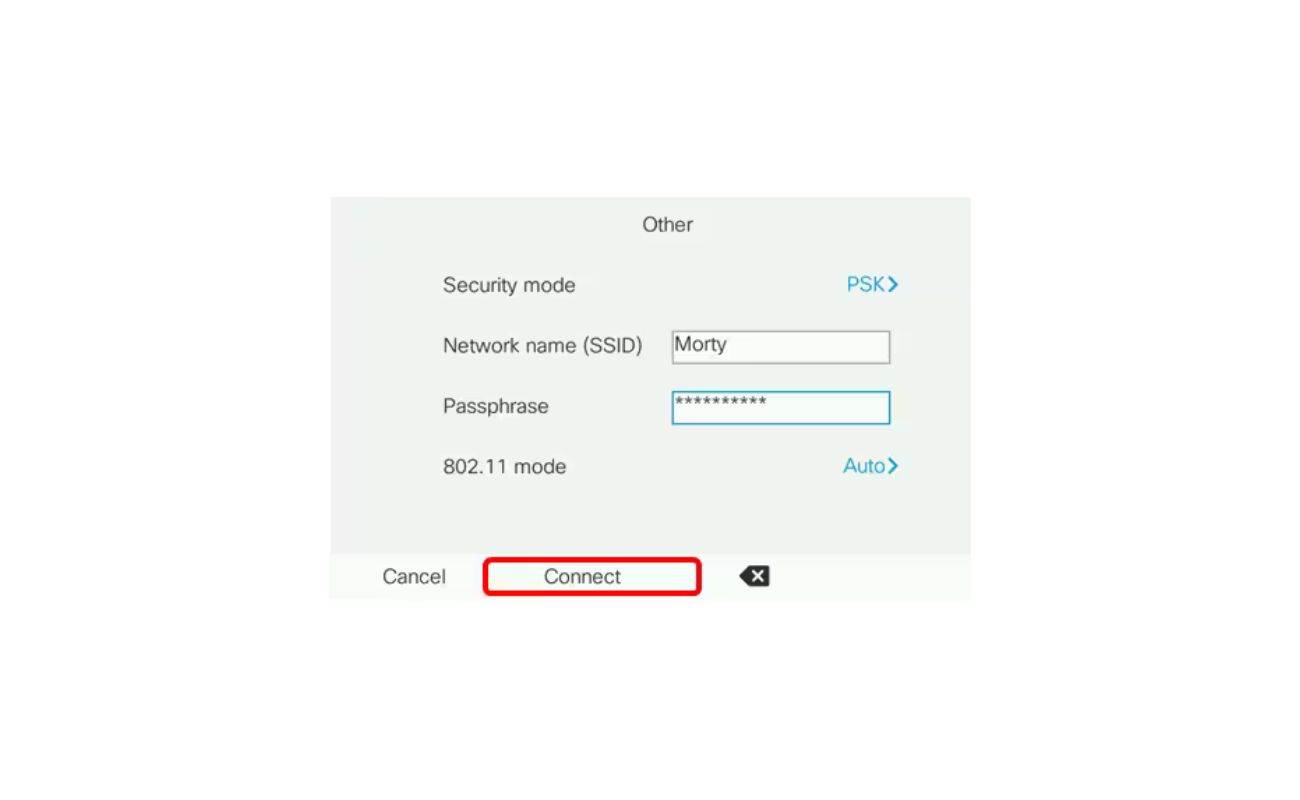Home>Home Security and Surveillance>How To Setup Hotspot With Wireless Security Systems


Home Security and Surveillance
How To Setup Hotspot With Wireless Security Systems
Modified: March 6, 2024
Learn how to set up a secure wireless hotspot for your home security and surveillance systems with our step-by-step guide. Safeguard your property with ease!
(Many of the links in this article redirect to a specific reviewed product. Your purchase of these products through affiliate links helps to generate commission for Storables.com, at no extra cost. Learn more)
Introduction
Welcome to the world of home security and surveillance! In today’s fast-paced world, ensuring the safety of our homes and loved ones has become a top priority. With advancements in technology, we now have access to a wide range of wireless security systems that provide comprehensive protection and peace of mind.
One important aspect of setting up a wireless security system is the ability to create a hotspot. A hotspot allows you to wirelessly connect your security system to your home network, enabling you to monitor and control it remotely. This feature provides convenience and flexibility, as you can access your security system from anywhere, at any time.
In this comprehensive guide, we will walk you through the process of setting up a hotspot with your wireless security system. We will cover everything from understanding wireless security systems to troubleshooting common issues. So, let’s dive in and learn how to take your home security to the next level!
Key Takeaways:
- Setting up a hotspot with your wireless security system allows you to control and monitor your home security from anywhere, providing peace of mind and real-time alerts for added security.
- To ensure a smooth and secure connection, prepare your home network by checking internet speed, securing Wi-Fi, positioning the router, allocating bandwidth, and optimizing network security.
Read more: How Do You Setup Wireless Security?
Understanding Wireless Security Systems
Before diving into the process of setting up a hotspot, it’s important to have a clear understanding of wireless security systems. These systems consist of various components that work together to provide a comprehensive security solution for your home.
The main components of a wireless security system typically include:
- Control Panel: This acts as the central hub of the system, connecting and managing all the different devices.
- Wireless Cameras: These cameras capture high-definition video footage and transmit it wirelessly to the control panel or a mobile device.
- Wireless Sensors: These sensors are placed on doors, windows, and other areas of your home to detect any unauthorized entry or movement.
- Alarm System: When triggered by a sensor or manually activated, the alarm system produces loud sounds or alerts to deter intruders and notify homeowners.
- Mobile App: Many wireless security systems come with a mobile app that allows you to monitor and control your system remotely from your smartphone or tablet, even when you’re away from home.
Wireless security systems offer several advantages over traditional wired systems. Firstly, they are easy to install and can be set up without professional assistance. Additionally, the absence of wires makes them less susceptible to tampering or sabotage. They are also highly scalable, meaning you can add more cameras or sensors to expand your security coverage as needed.
Moreover, wireless security systems provide flexibility in terms of camera placement. You can strategically position cameras at various vantage points around your property without worrying about running cables through walls and ceilings. This allows for greater coverage and ensures that no blind spots are left unmonitored.
It’s worth noting that wireless security systems rely on your home’s Wi-Fi network for transmission of data and remote access. This is where setting up a hotspot becomes crucial. By establishing a hotspot, you create a dedicated and secure connection between your security system and your network, providing you with seamless access to monitor and control your system from anywhere.
Now that you understand the basics of wireless security systems, let’s move on to the benefits of setting up a hotspot.
Benefits of Setting up a Hotspot
Setting up a hotspot with your wireless security system offers numerous benefits that enhance the functionality and convenience of your home security setup. Let’s explore some of the key advantages:
- Remote Access: Perhaps the most significant benefit of setting up a hotspot is the ability to remotely access and control your security system. Whether you are at work, on vacation, or simply in another room of your house, you can easily monitor live video feeds, receive instant notifications, and arm or disarm your system with just a few taps on your mobile device. This flexibility provides peace of mind and ensures that you stay connected to your home security at all times.
- Real-Time Alerts: With a hotspot-enabled security system, you can receive real-time alerts on your smartphone or tablet in case of any suspicious or unexpected activities. You can customize these alerts to notify you when specific events occur, such as a camera detecting motion or a sensor being triggered. This allows you to take immediate action and contact the authorities if necessary, minimizing the chances of loss or damage.
- Video Playback and Storage: Many wireless security systems offer the option to record and store video footage. By setting up a hotspot, you can easily access and review recorded video clips from your mobile device. This is particularly useful for investigating past events, tracking patterns, or providing evidence in case of a break-in or incident.
- Smart Home Integration: Integrating your security system with other smart devices in your home becomes seamless with a hotspot connection. You can create automation rules that link your security system with lights, locks, and other smart devices. For example, when your security system senses motion near your front door, it can automatically turn on the porch lights or lock the front door. This level of integration enhances the overall security and convenience of your home.
- Reduced False Alarms: By setting up a hotspot, you create a dedicated and secure network connection between your security system and your home network. This ensures stable communication and minimizes the chances of false alarms caused by network disruptions or interference. You can trust that the alerts you receive are reliable and accurate, allowing you to respond effectively to genuine security threats.
These are just a few of the many benefits of setting up a hotspot with your wireless security system. The next step is to prepare your network for the hotspot setup, ensuring a smooth and secure connection. Let’s explore this process in the next section.
Preparing Your Network for Hotspot Setup
Before you can fully utilize the hotspot feature of your wireless security system, it’s important to properly prepare your home network. By following these steps, you can ensure a smooth and secure connection:
- Check Your Internet Speed: Start by checking your internet speed. A fast and stable internet connection is essential for optimal performance. Ensure that your internet service provider (ISP) is providing you with the speed you are paying for, as this will determine the quality of video streaming and remote access to your security system. You can use online speed test tools to check your current download and upload speeds.
- Secure Your Wi-Fi Network: It’s crucial to secure your Wi-Fi network to prevent unauthorized access to your security system. Change the default router password and Wi-Fi network name (SSID) to something unique and secure. Use a strong password with a combination of numbers, letters, and special characters. Additionally, enable WPA2 encryption to protect your network traffic from eavesdropping and ensure that only authorized devices can connect to your network.
- Position Your Router: The placement of your router plays a significant role in the strength and coverage of your Wi-Fi signal. Position it in a central location in your home, away from obstructions such as walls and large appliances. Consider using a Wi-Fi extender or mesh network system if you have a large home or areas with weak signal coverage.
- Allocate Bandwidth: If you have multiple devices connected to your network, it’s important to allocate sufficient bandwidth to your security system. This will ensure that it has a stable and reliable connection for video streaming and remote access. You can prioritize your security system or assign a fixed IP address to it in the router settings to give it higher priority over other devices when it comes to bandwidth allocation.
- Optimize Network Security: In addition to securing your Wi-Fi network, consider enabling additional network security features. Features like MAC address filtering allow you to specify which devices can connect to your network, further preventing unauthorized access. It’s also a good practice to keep your router’s firmware up to date, as manufacturers often release security patches and updates to address vulnerabilities.
By following these steps, you can ensure that your network is ready for the hotspot setup with your wireless security system. In the next section, we will guide you through the process of choosing the right wireless security system for your needs.
Choosing the Right Wireless Security System
When it comes to choosing a wireless security system, there are several factors to consider to ensure you select the right one for your specific needs. Here are some key considerations:
- Security Features: Look for a wireless security system that offers robust security features such as motion detection, night vision, and two-way audio. These features provide enhanced surveillance capabilities and allow you to monitor your home effectively.
- Camera Resolution: The resolution of the cameras is an important factor in determining the image quality. Higher resolution cameras produce clearer and more detailed video footage, enabling you to capture important details such as facial features or license plate numbers. Opt for cameras with at least 1080p or higher resolution for optimal clarity.
- Scalability: Consider your future needs and the ability to expand your system. Look for a wireless security system that allows you to add additional cameras, sensors, or other devices as your security requirements evolve. This scalability ensures that your system can adapt to any changes in your home or security needs.
- Mobile App: A user-friendly and feature-rich mobile app is crucial for seamless remote access and control of your security system. Look for an app that allows you to view live video feeds, receive notifications, and customize settings easily. Compatibility with both iOS and Android devices ensures that you have multiple options for accessing your system.
- Integration: If you already have other smart devices in your home, consider a wireless security system that offers integration capabilities. This allows you to create a unified smart home ecosystem where your security system can work in harmony with devices such as smart lights, locks, and voice assistants.
- Storage Options: Determine your preferences for video storage. Some wireless security systems offer cloud storage options, where recorded footage is stored securely in the cloud. Others provide local storage options, such as an SD card or a network-attached storage (NAS) device. Consider your storage needs and the associated costs when evaluating different systems.
- Budget: Finally, consider your budget and the overall value provided by the wireless security system. While it’s important to find a system within your price range, remember that investing in a reliable and feature-rich system is essential for the security of your home. Balance your budget with the features and capabilities you prioritize the most.
By considering these factors, you can make an informed decision and choose a wireless security system that aligns with your security needs, budget, and personal preferences. Once you have selected the right system, it’s time to move on to the next step: setting up a hotspot with your wireless security system.
When setting up a hotspot with wireless security systems, make sure to use strong encryption such as WPA2 and a unique password to prevent unauthorized access to your network.
Setting up a Hotspot with a Wireless Security System
Now that you have chosen the right wireless security system, it’s time to set up a hotspot to establish a seamless connection between your system and your home network. Follow these steps to set up a hotspot:
- Access the Control Panel: Begin by accessing the control panel of your wireless security system. This is usually done through a web browser or a dedicated mobile app provided by the manufacturer. Refer to the user manual or the manufacturer’s website for specific instructions on how to access the control panel.
- Locate the Hotspot Settings: Once you have accessed the control panel, look for the hotspot settings. This is where you will configure the connection between your security system and your home network. The exact location of these settings may vary depending on the manufacturer and model of your system. Again, consult the user manual or online resources for guidance.
- Connect to your Wi-Fi Network: In the hotspot settings, you will find an option to connect your security system to your home network. Follow the prompts to select your Wi-Fi network from the available list and enter your Wi-Fi network password. This will establish the initial connection between your system and your network.
- Configure Hotspot Settings: After connecting to your network, you will have the option to configure additional hotspot settings. This includes assigning a static IP address to your security system, specifying network protocols, and enabling port forwarding if necessary. Adjust these settings according to your network requirements and preferences.
- Test the Hotspot Connection: Once you have configured the hotspot settings, it’s important to test the connection between your security system and your network. Ensure that you can access the control panel and view live video feeds remotely from your mobile device. Test the responsiveness of the system and verify that it functions correctly when accessed through the hotspot connection.
- Secure the Hotspot: To ensure the security of your hotspot, consider implementing additional measures such as enabling two-factor authentication for accessing the control panel or enabling encryption for the hotspot connection. These steps add an extra layer of protection to prevent unauthorized access to your system.
By following these steps, you can successfully set up a hotspot with your wireless security system, allowing you to remotely monitor and control your system with ease. It’s worth noting that the specific steps and options may vary depending on the manufacturer and model of your security system, so be sure to refer to the user manual or consult the manufacturer’s support resources for detailed instructions.
In the next section, we will discuss how to configure wireless security settings for optimal performance and protection of your system.
Configuring Wireless Security Settings
Configuring the wireless security settings of your wireless security system is crucial for ensuring optimal performance, protection, and peace of mind. Follow these steps to configure the wireless security settings:
- Password Protection: Change the default login credentials for accessing the control panel of your security system. Choose a strong, unique password that includes a combination of numbers, letters (upper and lower case), and special characters. Regularly update this password to minimize the risk of unauthorized access.
- Network Encryption: Enable encryption for the wireless connection between your security system and your network. The most common encryption protocols are WPA2-PSK (AES) or WPA3, which provide strong security for your network traffic. Avoid using older encryption protocols like WEP, as they are less secure and easier to compromise.
- MAC Address Filtering: Consider implementing MAC address filtering to further enhance the security of your wireless network. This feature allows you to specify which devices can connect to your network based on their MAC addresses. By allowing only trusted devices to connect, you can prevent unauthorized access to your network and your security system.
- Disable SSID Broadcasting: While not foolproof, disabling the broadcasting of your network’s SSID (network name) makes it less visible to potential attackers. This adds an extra layer of obscurity and can deter casual attempts to connect to your network. However, keep in mind that this may require you to manually enter the SSID when connecting new devices to your network.
- Regular Firmware Updates: Stay up to date with the latest firmware releases for your wireless security system. Manufacturers often release firmware updates to address security vulnerabilities and enhance overall system performance. Check for updates regularly and follow the manufacturer’s instructions to keep your system protected.
- Regular System Checks: Periodically review the settings and logs of your security system to ensure that everything is functioning as intended. Check for any suspicious activity, such as unfamiliar devices connected to your network, and investigate any potential security issues promptly.
By configuring these wireless security settings, you can create a secure and protected network environment for your wireless security system. Regularly reviewing and maintaining these settings will help keep your system up to date and protected against potential threats.
In the next section, we will address some common issues that may arise during the setup or usage of your wireless security system and provide troubleshooting tips to resolve them.
Troubleshooting Common Issues
While wireless security systems are generally reliable and user-friendly, you may encounter some common issues during the setup or usage of your system. Here are some troubleshooting tips to help you resolve these issues:
- Connection Issues: If you are experiencing connectivity issues between your wireless security system and your network, ensure that your Wi-Fi signal is strong and stable. Try moving your router closer to the system or consider using a Wi-Fi extender to boost the signal. Additionally, double-check that you have entered the correct Wi-Fi network name (SSID) and password during the setup process.
- Video Quality Issues: If you notice poor video quality or buffering during live streaming or playback, check your internet speed. Insufficient bandwidth may be causing the issue. You can conduct a speed test to determine if your internet connection meets the recommended requirements for your system. Consider upgrading your internet plan if needed.
- False Alarms: False alarms can be frustrating and disruptive. If your system is triggering false alarms, review the motion detection sensitivity settings. Adjusting the sensitivity level can minimize false alarms caused by minor movements like pets or swaying trees. Additionally, ensure that your cameras have a clear view, free from any obstructions that may trigger unnecessary alerts.
- Mobile App Issues: If you are experiencing issues with the mobile app, such as crashes or connectivity problems, try clearing the app cache or reinstalling the app. Ensure that your mobile device is running on the latest operating system version and that the app is up to date. If the problem persists, reach out to the manufacturer’s customer support for further assistance.
- Power Supply Problems: In the event of a power outage or issues with the power supply, your security system may not function properly. Ensure that your system has a backup power source, such as a battery or a generator, to keep it operational during power disruptions. Regularly check the batteries in your cameras and sensors to ensure they are sufficiently charged.
- Router Compatibility: Some wireless security systems may encounter compatibility issues with certain router models or network configurations. If you are experiencing consistent connectivity or performance issues, check for firmware updates for both your security system and router. Updating the firmware can often resolve compatibility issues.
If you have followed these troubleshooting tips and are still unable to resolve the issue, it is recommended to contact the manufacturer’s customer support for further assistance. They will have specialized knowledge and can provide specific troubleshooting guidance based on your system’s make and model.
With the troubleshooting steps provided, you should be able to overcome common issues and enjoy the full functionality of your wireless security system. In the final section, we will summarize the key points discussed and wrap up our guide on setting up a hotspot with a wireless security system.
Conclusion
Congratulations on successfully setting up a hotspot with your wireless security system! By following the steps outlined in this guide, you have created a seamless and secure connection between your security system and your home network. This allows you to remotely monitor and control your system, enhancing the overall security and convenience of your home.
Throughout this guide, we covered the essentials of wireless security systems, the benefits of setting up a hotspot, and the steps to prepare your network for hotspot setup. We discussed the importance of choosing the right wireless security system, configuring wireless security settings, and troubleshooting common issues that may arise.
Remember, a wireless security system with a hotspot connection offers numerous advantages such as remote access, real-time alerts, video playback and storage, smart home integration, and reduced false alarms. By properly configuring your wireless security settings, you can enhance security and protect your system from potential threats.
If you encounter any difficulties during the setup or usage of your wireless security system, always refer to the user manual or reach out to the manufacturer’s customer support for assistance. They will have the expertise to address any specific issues you may encounter.
With your new hotspot-enabled wireless security system, you can have peace of mind knowing that your home and loved ones are protected. Enjoy the convenience and flexibility of being able to monitor and control your system from anywhere, at any time. Stay vigilant and proactive in maintaining the security of your system, and stay up to date with the latest firmware updates and best practices.
Thank you for joining us on this comprehensive guide. We hope it has provided you with valuable insights and guidance in setting up a hotspot with your wireless security system. Stay safe, secure, and connected!
Frequently Asked Questions about How To Setup Hotspot With Wireless Security Systems
Was this page helpful?
At Storables.com, we guarantee accurate and reliable information. Our content, validated by Expert Board Contributors, is crafted following stringent Editorial Policies. We're committed to providing you with well-researched, expert-backed insights for all your informational needs.
